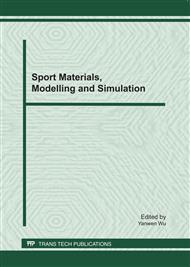p.498
p.504
p.510
p.516
p.522
p.528
p.535
p.540
p.544
Psychological Characteristics of Cognition of Environmental Sculpture Information
Abstract:
As an integral element of the space environment, the environmental sculpture plays an important role in the decoration of space environment, the expression of urban culture and reflection of the city's character, etc. Environmental sculpture is a visible symbol independent and outside of the sign of nature or architectural language, which has become an important cultural carrier between the communication of environment and people. From the perspective of cognitive science, this paper analyzes the relationship between people, environment and environmental sculpture to explore the psychological characteristics of cognition of environmental sculpture and examines, analyzes and interprets the phenomenon of environmental sculpture from the cognitive psychology perspective, which brings some enlightenment for the design of environment sculpture.
Info:
Periodical:
Pages:
522-527
Citation:
Online since:
February 2011
Authors:
Price:
Сopyright:
© 2011 Trans Tech Publications Ltd. All Rights Reserved
Share:
Citation:


